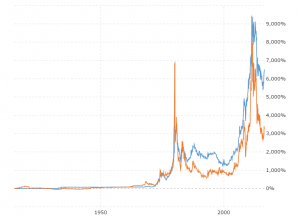A Look at the Citizens Coinage Advisory Committee
The steps involved in bringing a new coin into circulation are many. Not only is federal legislation required for every new issue, but all stages of the process must be reviewed, and that is before the technical work of making dies and stamping the coins has even begun. The US Mint once worked in isolation, making its own decisions about designs and issues, but for almost 15 years now it has taken advise from the Citizens Coinage Advisory Committee, usually called the CCAC. The role of the Committee is to be an outside voice, representing both ordinary citizens and the coin-collecting community, not influenced by the inevitable internal politics of Washington and the Mint. This public voice, making suggestions and examining proposals, serves to connect the ordinary American with the coins in their pockets and purses.
The CCAC was established by Congress in 2003. The relevant bill is known as the `American 5-Cent Coin Design Continuity Act of 2003′, but section 103 of that legislation established a body to ‘advise the Secretary of the Treasury on the selection of themes and designs for coins’. This was felt important, so that the Mint did not work in isolation, and instead created coins with wide popular appeal. This new committee replaced an older body – the Citizens Commemorative Coin Advisory Committee.
To give an idea of the working of the CCAC, earlier this year they met with Mint artists to express their feelings about the kinds of designs they wanted to see. They placed a heavy emphasis on designs filled with symbolic meaning, rather than literal illustrations. These wishes were realized at a recent meeting, when the artists showed their proposals for further issues in the America the Beautiful Quarters series. Specific designs for San Antonio Missions National Historical Park in Texas and the Lowell National Historical Park in Massachusetts were selected from a range shown them, and the members are reported to have been thrilled with these designs.
The full Committee consists of 11 members, chosen by the Secretary of the Treasury. To ensure a mix of suitable talents and interests among the members, they are chosen as follows:
- One member who is a recognized as the curator of a significant coin collection – with the relevant education, qualifications and experience for such a position
- One member who has experience in the artistic creation of medals, or sculptors
- One member with training or experience in American history
- One member widely knowledgeable in numismatics – the collecting of coins
- Three members to represent the interests of the general public in coin issues
- Four members chosen by high-ranking officials of the legislature, specifically:
- One by the Speaker of the House of Representatives
- One by the minority leader of the House of Representatives
- One by the majority leader of the Senate
- One by the minority leader of the Senate
This mix of members ensures that specialists and the public have a majority on the committee, to reduce political interference in its decisions.
Members are appointed for 4-year terms, but some of the initial appointments for the first Committee served shorter terms, so new members come on board gradually, preserving continuity and preventing a sudden influx of inexperienced faces. Members are not paid, but their expenses are of course covered. Meetings are held at least twice a year, and an annual report is submitted to the Secretary of the Treasury each September. The CCAC may be a little-known body, but it is one that does a big job in bringing interesting coins onto the streets and into the hands of collectors.








